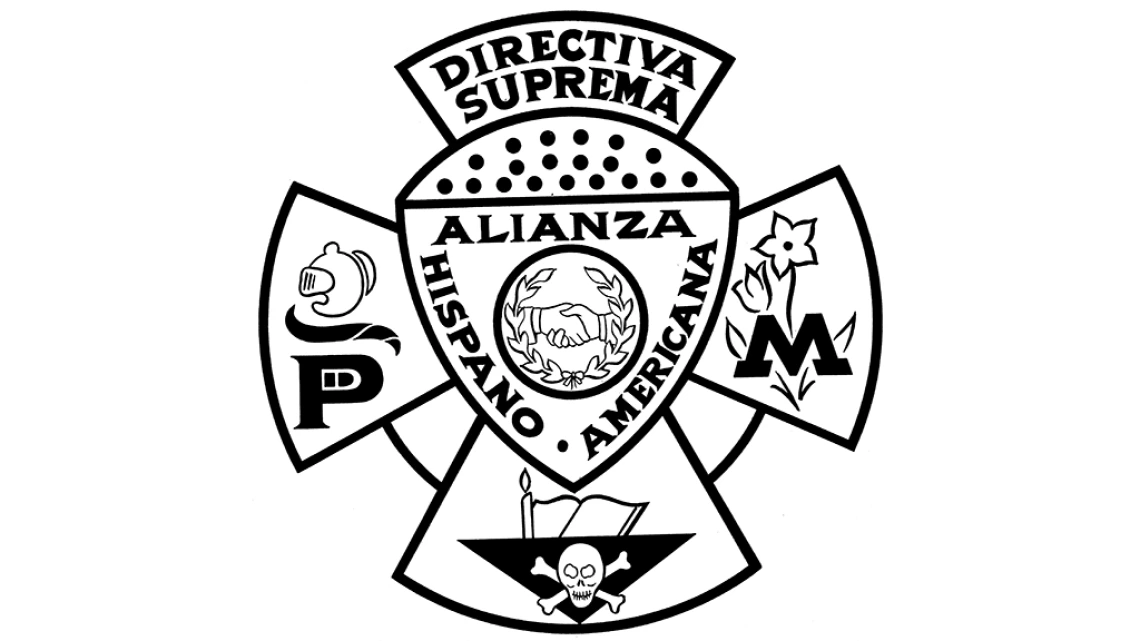Alianza Hispano-Americana records

One of the seals of Alianza Hispano-Americana, a fraternal insurance organization that served Mexican-American and immigrant communities in Arizona, surrounding southwest states, and Mexico.
Collection area: Borderlands Arizona and Southwest
Collection dates: 1894-1965 bulk 1920-1950
This collection has been divided into several series including photographs, administrative files, financial documents, convention files for two large Alianza conventions, business correspondence, lodge correspondence that includes the secretary's monthly collection reports, correspondence and newsletters from organizations that wished to partner with Alianza for social events, published materials including Alianza magazine, newspaper clippings, scrapbooks, and ledgers. Ledgers are of significant importance to the collection because they contain membership information on individual members that joined lodges across the United States.
The Alianza Hispano-Americana offered low-cost life insurance, social activities, and other services to primarily Mexican/Mexican-Americans living in the United States and Mexico. Founded in Tucson in 1894, Alianza was one of the first organizations to offer life insurance and burial policies to Mexican-American citizens when other companies would not insure the community. A social society, Alianza provided services to migrants who were displaced from their traditional sources of support when they moved to urban cities, leaving behind family members, traditional communities, and socio-economic factors in order to find employment. The first insurance lodge opened in Florence, Arizona in 1895. Lodges next opened in smaller Arizona copper mining towns like Clifton, Bisbee, and Globe.
A fraternal insurance society from 1895-1965, Alianza Hispano-Americana maintained a leadership role in Mexican-American and Mexicanos communities by expanding its lodges throughout the United States and Mexico. At its height, the organization had 300 lodges and over 17,000 members.
The organization’s motto, “Proteccion, Moralidad, e Instrucción” (Protection, Morality and Instruction), were described as key principles in the Crónicas of the Alianza by Tomás Serrano Cabo (1929). Protection was the basis of the organizations’ foundation, whose significance went beyond insurance benefits and included “visits to the sick, help for the needy, and attendance at members’ funerals,” according to Serrano.
The Alianza Hispano-Americana organization was governed by statues, which defined the roles of its members and officials, and set forth procedures for the acceptance/dismissal of members, as well as listed official conduct of meetings and elections.
In addition to burial and illness benefits, sociedades mutualistas like Alianza also served the following other functions: religious, educational, legal, political, cultural, and social needs. These needs varied from lodge to lodge, and changed based on the social, political, and economic situation of the membership.
By 1950, membership in the Alianza Hispano-Americana had declined and its insurance certificates were losing their value. A public feud between Gregorio Garcia and Candelario Sedillo over the Supreme Presidency (1948-1950) had also tarnished the organization’s name. In 1963, Supreme President James Carlos McCormick tasked himself and Alianza with increasing Mexican-American visability in Tucson, Washington DC, and other parts of the United States. Yet in 1965, McCormick resigned when the Supreme Executive Council placed a lien against all society insurance certificates. After his resignation, McCormick was indicted on charges of embezzlement and the society was forced into receivership.
A collection guide explains what's in a collection. New to using our collections? Learn how to use a collection guide.
Collection guideAccess this collection
Visit us in person to access materials from this collection. Our materials are one-of-a-kind and require special care, so they can’t be checked out or taken home.
How to cite
Learn how to cite and use materials from Special Collections in your research.
